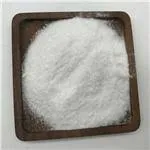Chemicals Used in Wastewater Treatment Plants
Wastewater treatment is a critical process that aims to remove contaminants from used water before it is discharged back into the environment. This process is essential in maintaining public health, protecting waterways, and ensuring ecosystem sustainability. Various chemicals play pivotal roles in different stages of wastewater treatment. Understanding these chemicals and their functions can help in optimizing treatment processes and improving water quality.
1. Coagulants and Flocculants
The primary goal of wastewater treatment is to remove suspended solids and organic matter. Coagulation is a physical-chemical process that involves adding coagulants to the wastewater. Common coagulants include aluminum sulfate (alum), ferric chloride, and polyaluminum chloride. These chemicals neutralize the charges on suspended particles, causing them to clump together into larger aggregates known as flocs.
Once flocculation occurs, the larger particles can be more easily removed through sedimentation or filtration. Flocculants, such as synthetic organic polymers, are often used in conjunction with coagulants to enhance the removal efficiency by further promoting the aggregation of smaller particles.
2. Disinfectants
Disinfection is a crucial step in wastewater treatment, particularly for treating effluent before it is released into the environment or reused. Chlorination is one of the most widely used methods, where chlorine or chlorine compounds, such as sodium hypochlorite, are added to kill pathogenic organisms. While effective, it can lead to the formation of harmful disinfection by-products (DBPs), necessitating careful management of chlorine dosage.
Alternatives to chlorination include ultraviolet (UV) light and ozone. UV disinfection involves exposing wastewater to UV light, effectively inactivating pathogens without the chemical residuals associated with chlorination. Ozone, a powerful oxidizing agent, is another effective disinfectant that breaks down organisms but requires careful handling due to its reactive nature.
3. pH Adjusters
what chemicals are used in wastewater treatment plants

Maintaining appropriate pH levels in wastewater is essential for optimal treatment. Chemicals such as sulfuric acid, sodium hydroxide, or sodium bicarbonate are commonly used as pH adjusters. These chemicals help to maintain the pH within a specific range conducive to microbial activity during biological treatment processes. For instance, many bacteria thrive in a neutral to slightly alkaline environment, which is crucial for effective biological degradation of organic matter.
4. Nutrients
In biological treatment systems, particularly activated sludge processes, the addition of nutrients is vital for microbial growth. Nitrogen and phosphorus are key nutrients required for the metabolism of microorganisms. Ammonium sulfate or urea can serve as nitrogen sources, while compounds like phosphoric acid provide the necessary phosphorus. Balancing nutrient levels is crucial as both deficiencies and excesses can impair treatment efficiency.
5. Adsorbents and Ion Exchange Resins
In advanced treatment processes, adsorbents such as activated carbon are used to remove organic compounds, heavy metals, and other pollutants. Activated carbon works by adsorbing contaminants onto its surface, effectively reducing pollutant levels. Additionally, ion exchange resins are utilized to remove specific ions from wastewater, such as ammonium or heavy metal ions, by exchanging them with harmless ions.
6. Odor Control Chemicals
Odor control is an important consideration in wastewater treatment plants, as the decomposition of organic matter can produce foul-smelling compounds. Chemicals such as calcium nitrate and sodium hypochlorite can be added to mitigate odors. Calcium nitrate works by promoting the growth of specific bacteria that consume odorous compounds, while sodium hypochlorite can oxidize these compounds directly.
Conclusion
The successful operation of wastewater treatment plants relies on a range of chemicals that aid in the various treatment processes. From coagulants and disinfectants to pH adjusters and nutrients, each chemical plays a vital role in ensuring that wastewater is treated effectively and safely. As regulations and environmental standards continue to evolve, ongoing research and innovation in chemical treatments will be essential in optimizing efficiency and minimizing the ecological impact of wastewater treatment operations.

